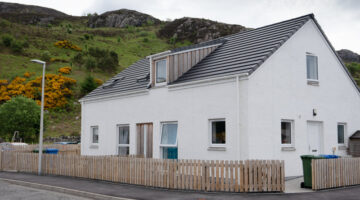



Gairloch Community Housing Trust
Main objectives of the project
Communities throughout the Highlands have experienced depopulation, diminishing services, and the complexities arising from growing tourism and housing prices. Consequently, there has been a depletion of existing housing options and heightened strain on remaining businesses and services. This situation has led to reduced accessibility to housing, land, and assets. However, the Gairloch initiative, through its Local Plan and Community Housing Trust, has initiated a transformation in housing policies within depopulated regions in Scotland.
Date
Stakeholders
- Promotor: Gairloch CHT
Location
Country/Region: United Kingdom
Description
Situated on the coast of Wester Ross, in the northwest Highlands of Scotland, the village of Gairloch boasts a relatively small population of around 750 residents. Despite its size, Gairloch serves as the primary hub for the region, offering essential amenities such as shops, services, and a high school. Positioned within an Area of Outstanding Beauty (AOB), Gairloch has long been a destination favored by tourists.
The rise in second homes and holiday lets has contributed to a scarcity of available housing, driving prices beyond the means of local inhabitants. Consequently, the local school enrollment has declined, as families struggle to secure suitable and affordable accommodation. Additionally, young people facing similar housing obstacles, coupled with reliance on a low-wage seasonal tourism economy, are contributing to demographic shifts that could jeopardize the village's long-term viability.
Recognizing the pressing need for regeneration and addressing these issues, there was widespread community support for revitalizing the area. The Community Housing Trust (CHT) spearheaded a collaborative effort, convening a steering group comprising over 50 representatives from local organizations, landowners, and the public sector. Their goal was to maximize the potential of a derelict site and adjacent land to meet the multifaceted needs of the community.
The Achtercairn development emerged as a mixed-use project, combining affordable housing with various tenures and facilities catering to social, commercial, educational, and training needs. Notably, CHT introduced an innovative legal concept known as the Rural Housing Burden title condition, which offers a percentage discount from the market value while granting full ownership to the property owner. This mechanism ensures long-term affordability, yet CHT retains the right to repurchase homes and prioritize locals in allocation policies.
Collaborating with local, regional, and national partners, the development delivered 25 highly energy-efficient homes across two phases, facilitated by CHT, Albyn Housing Association, and the Highland Council. These homes offer a mix of social rent, low-cost homeownership, and rent-to-buy options. The success of the Achtercairn project has paved the way for similar community-led initiatives, such as the ongoing work in the crofting community of Staffin in Skye. Here, a mixed-use development is underway, providing affordable housing alongside commercial opportunities and essential services, demonstrating a scalable model to address rural inequality and combat the climate crisis.

